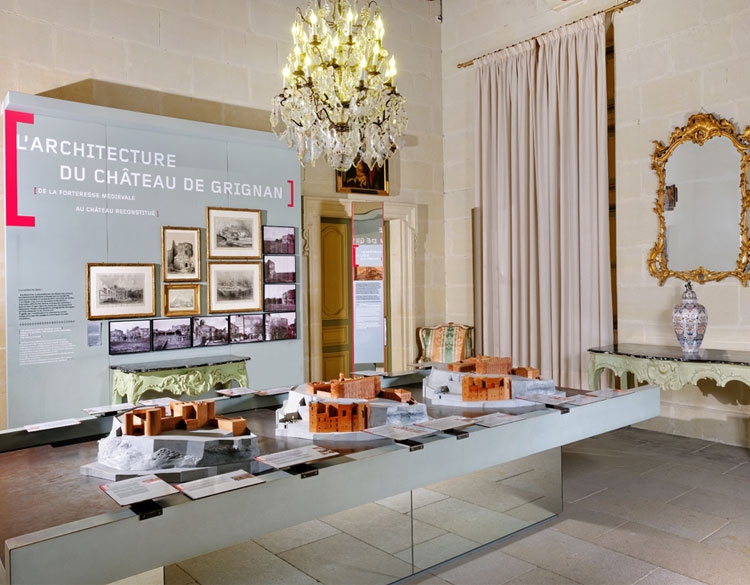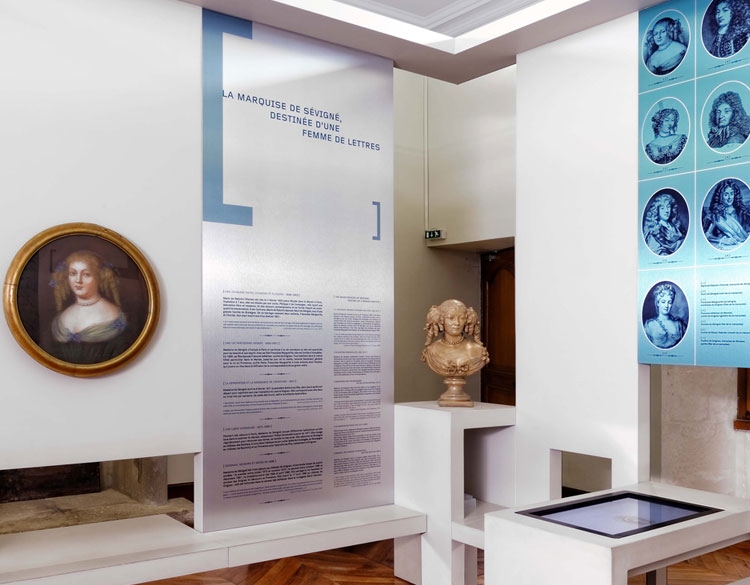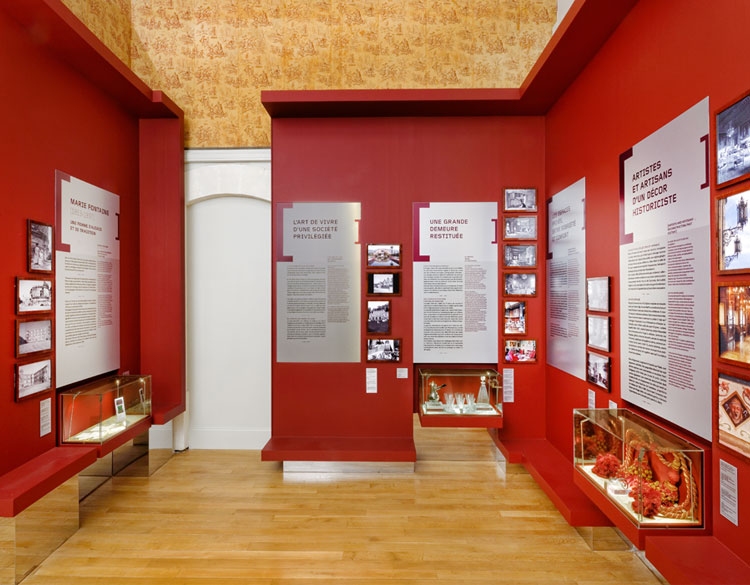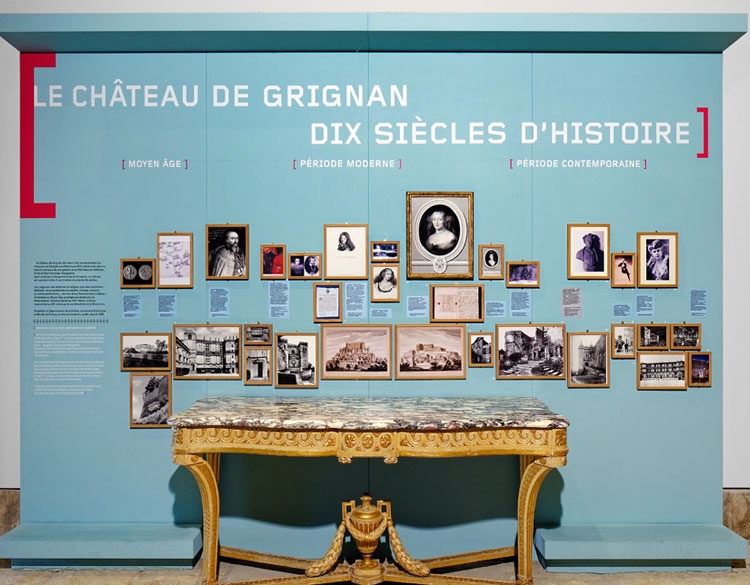The château of Grignan on video
Discover the château of Grignan in a film shot in partnership with Montelimar Tourism.
Discover the château of Grignan in a film shot in partnership with Montelimar Tourism.
L’Histoire d’Ariane
Tenture composée de huit tapisseries en laine et soie
Aubusson, fin du 17e siècle
« Le château de Grignan conserve une tenture de l’Histoire d’Ariane. Composée de huit tapisseries, elle a été tissée à Aubusson à la fin du 17e siècle. Art monumental par excellence, la tapisserie demeure, à cette époque, l’un des principaux décors des intérieurs nobles. Elle participe à la solennité d’un lieu tout en isolant efficacement du froid. Un inventaire de 1668 en dénombre 135 au château de Grignan.
Le sujet de l’Histoire d’Ariane est emprunté à un roman écrit par Jean Desmaret (1595-1676). Elle relate les aventures d’une jeune Sicilienne, Ariane, et de ses trois compagnons (Palamède, frère d'Ariane, Mélinte, amant d'Ariane et sa servante Épicharis) au temps de l’empereur Néron. Sillonnant le bassin méditerranéen, les jeunes gens affrontent de terribles et extravagantes épreuves. Si les scènes principales sont tirés de gravures d’Abraham Bosse (1604-1676), le paysage s’inspire de la nature aubussonnaise. Ces décors bucoliques soulignent le charme naïf des personnages. C’est cette esthétique à la poésie fraîche et simple que j’apprécie dans les tapisseries d’Aubusson de cette époque. »
Pierre Guiral, médiateur du patrimoine
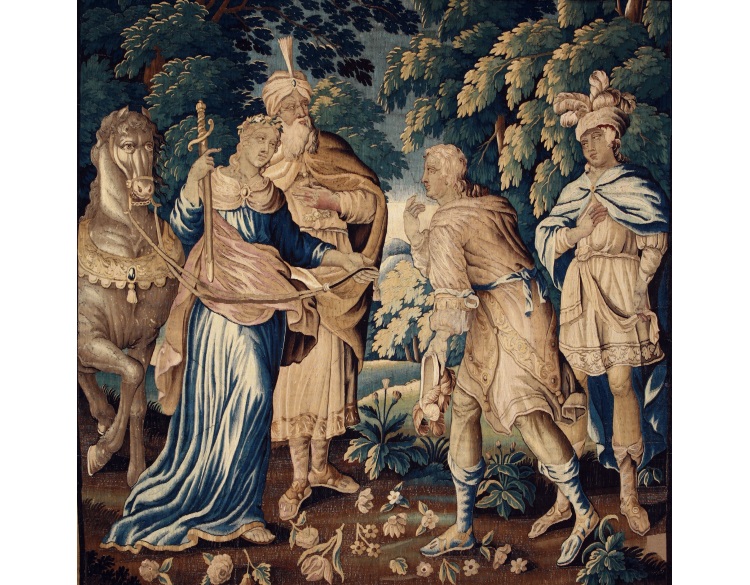
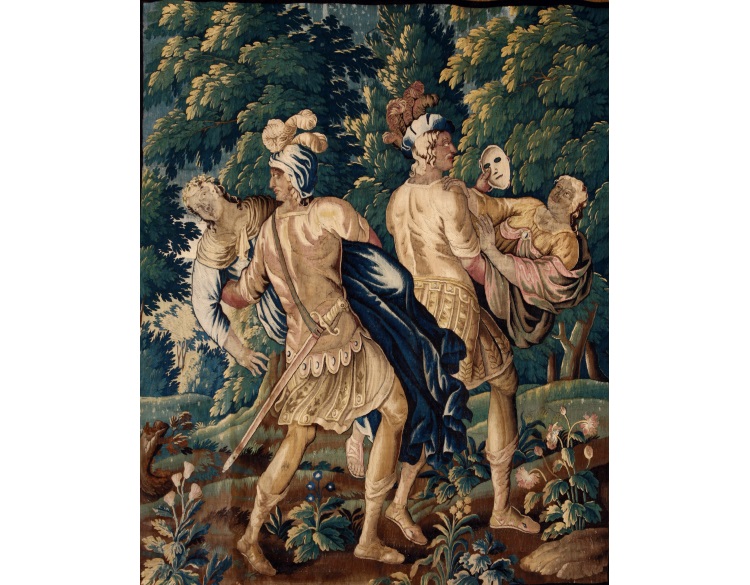
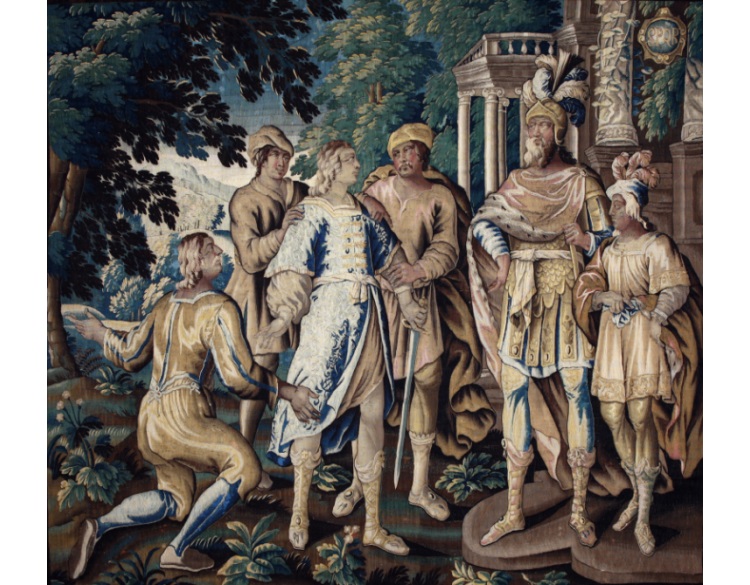
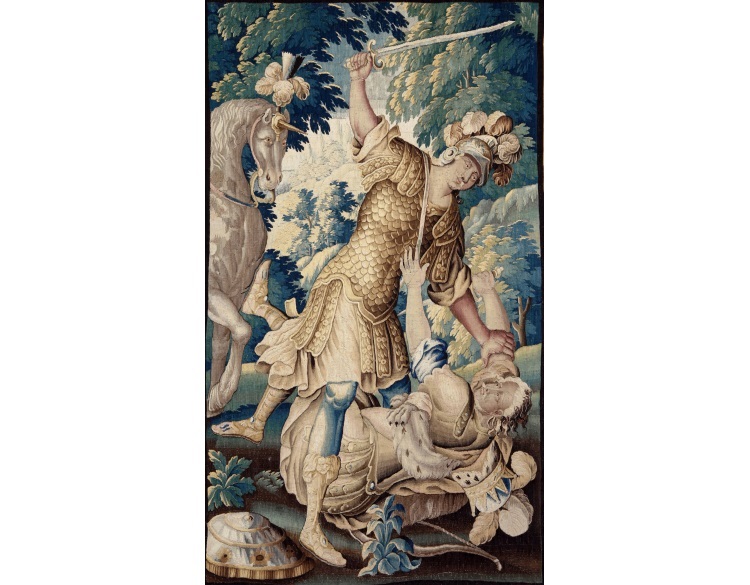
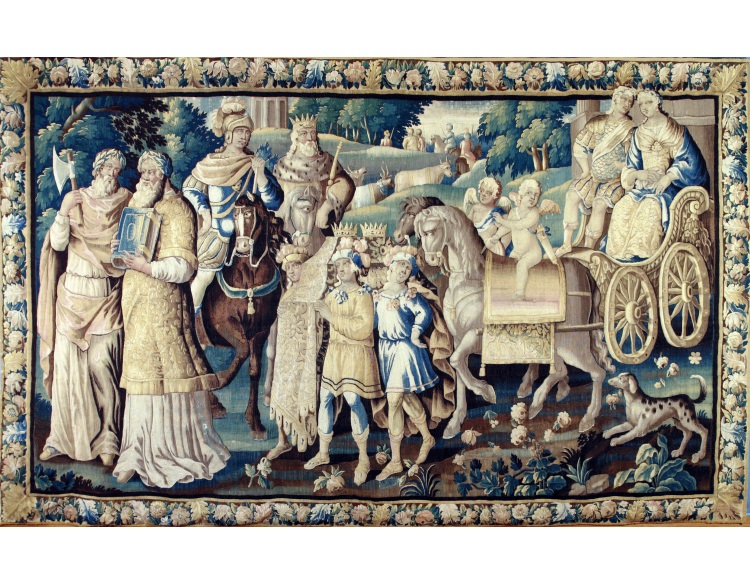
The château of Grignan, with its Musée de France label, is a unique place in the Drôme thanks to the quality of its collections and interior decorations. Art pieces fill the apartments and reception rooms of the three levels of the great residence. The varied decorative sets are the reflection of a place enriched by the contribution of all the families who successively lived there.
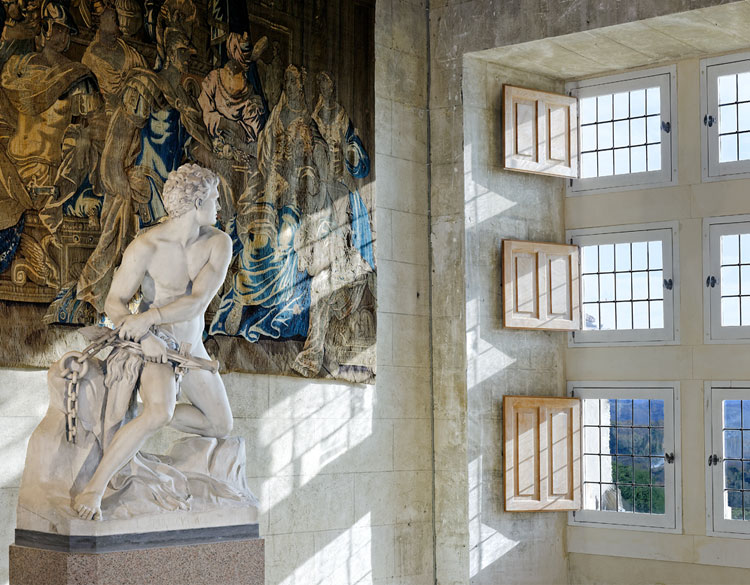
Paintings and decorative art pieces from the 16th to the 20th century, produced in France and Italy, make up the bulk of the collections. Recent research by art historians and heritage restorers has considerably improved the knowledge on those pieces. It has thrown more light on the artistic context of their orders and productions, whilst enhancing both the originality and the quality of each object. Their variations in materials and shapes, their embellishment details and delicate execution, their sources of inspiration will all delight the eye, whether well-informed or novice. Originals and old copies are combined here. In that decor reconstituted from sixteenth, seventeenth and eighteenth-century archives of the château, the visitor will stroll along colours, images and material effects. Beds, seats, chandeliers, tapestries, paintings, engravings, ceramics, wall-clocks and other pieces conjure up inside what the architecture reflects outside: the taste for sumptuousness and elegance of an art of living in an outstanding building.
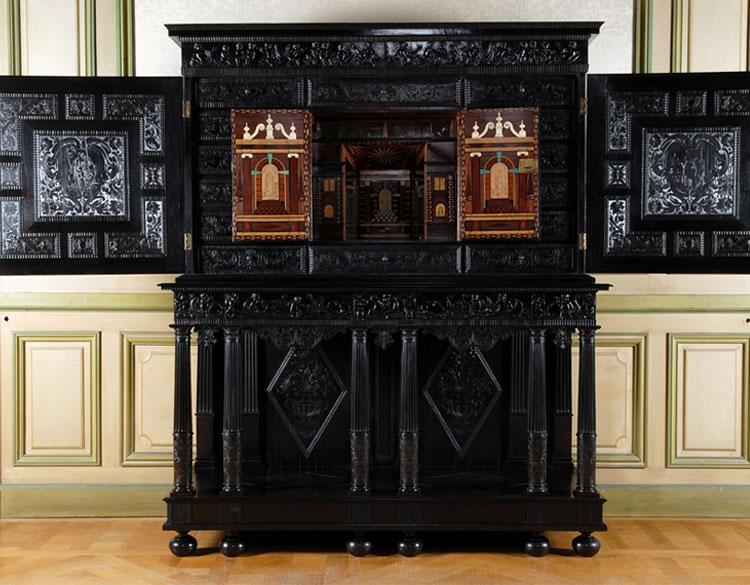
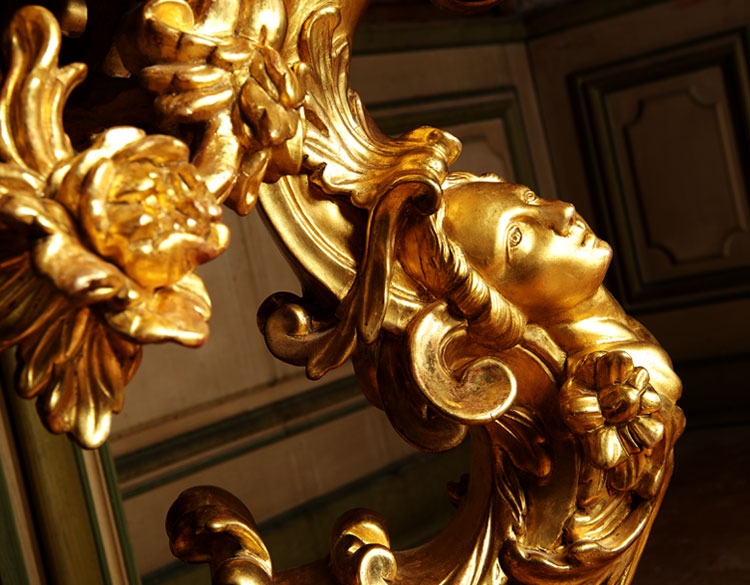
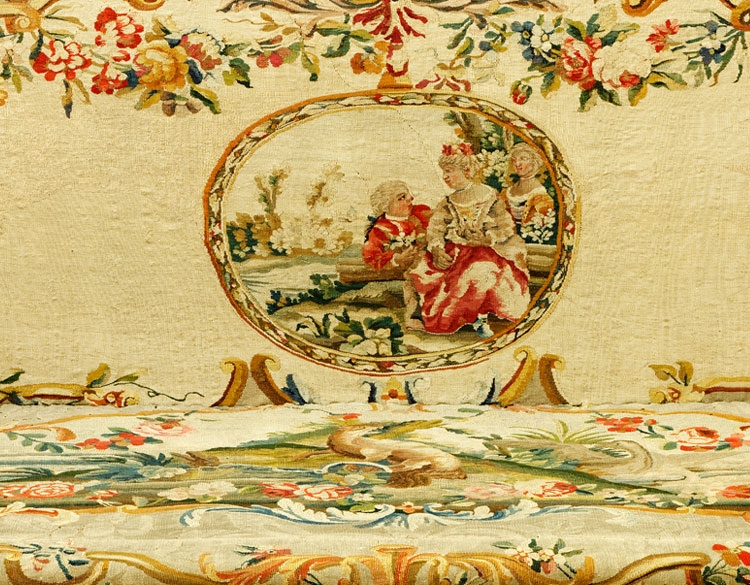
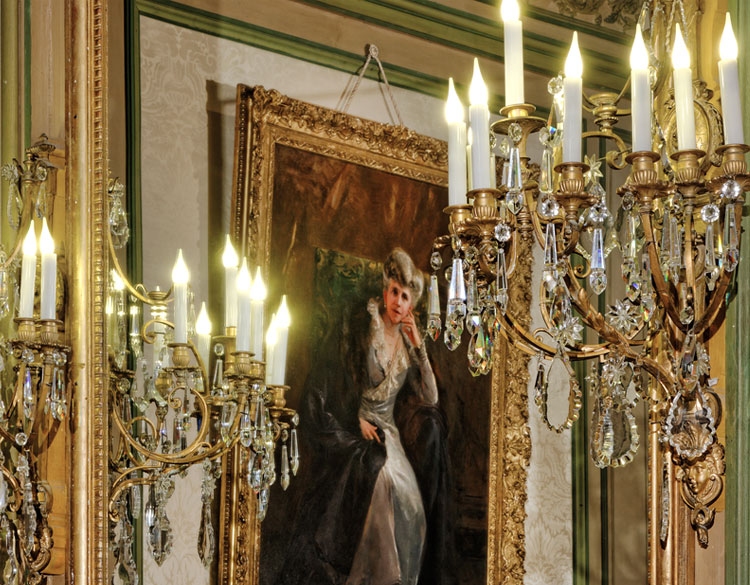
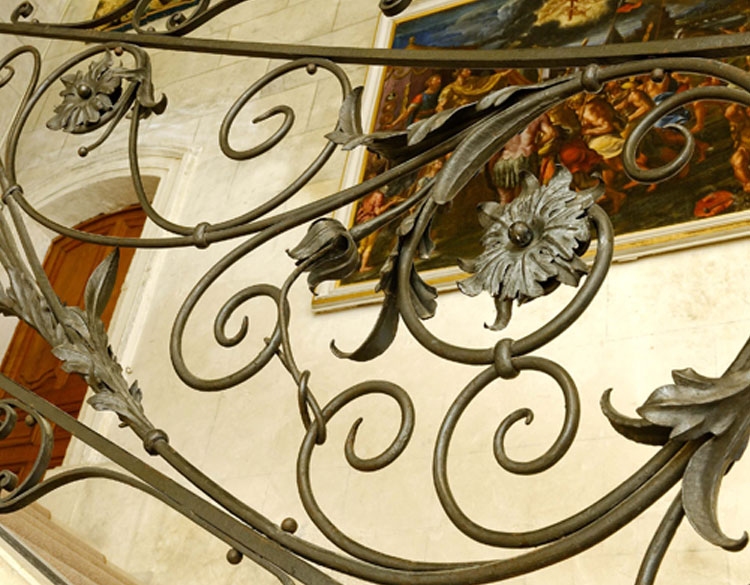
Presentation of four emblematic rooms reminiscent of the decorated and furnished interiors of the château.
Right in the centre of the Renaissance wing of the château, this large room called antechamber is shared by the two noble apartments on either side. It combines the functions of waiting room and reception space. Nowadays, it includes wood panelling dating back from the 1820s. Inspired by antiquity, its motifs combined with light and golden colours are emblematic of the neoclassical period. Created for a Crest private mansion, the panelling entered the collections of the château in 1983 in order to be preserved.
With its thick twelfth-century walls and large proportions, this room is situated within the medieval donjon walls. A former seigniorial bedroom, it was pierced by doors from the Middle-Ages to the Renaissance in order to link it to new buildings. At the end of the 17th century, it became the new bedroom of the Countess of Grignan, Françoise-Marguerite de Sévigné known as "Madame". She lined it with a sober and rich fabric in vogue in the Parisian interiors of the time, as shown in an inventory of 1672 done a year after her arrival. Its present-day furnishings are directly inspired by that period.
Erected in the 13th century, this great hall was the main room of the seigniorial abode, place for the Baron's public life. Extended in the 15th century, it displayed a monumental fireplace with the Adhémars' coat of arms. It was referred to as the king's room in the 18th century due to its portrait of Louis XV. Abandoned from the Revolution onwards, it slowly deteriorated. The fireplace was dismantled and sold in the 1900s.
Refitted in 1918, the room was adorned with sumptuous and eclectic decorations reflecting its former prestige, the main fixture being the neo-classical fireplace.
Erected at the end of the 15th century, the gallery was incorporated in the apartment of Gaucher Adhémar de Monteil, the Baron of Grignan. Directly accessible from the right staircase, that "longer than wide" vast room was a functional vestibule leading to two noble bedrooms which have since disappeared. Emblematic of French Renaissance, the room was transformed into a reception room when required. Its current decor with its fireplaces with coats of arms, walnut panelling, brocaded fabric (brocatelle) and wrought-iron wall lights is inspired by the 16th century.
From now on a place for visits and for artistic and cultural events, the gallery has resumed its dual function of passageway and reception room.
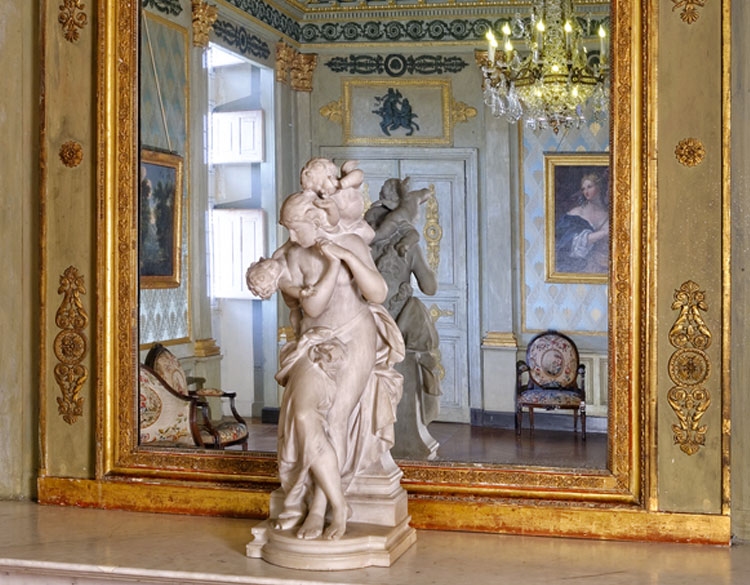
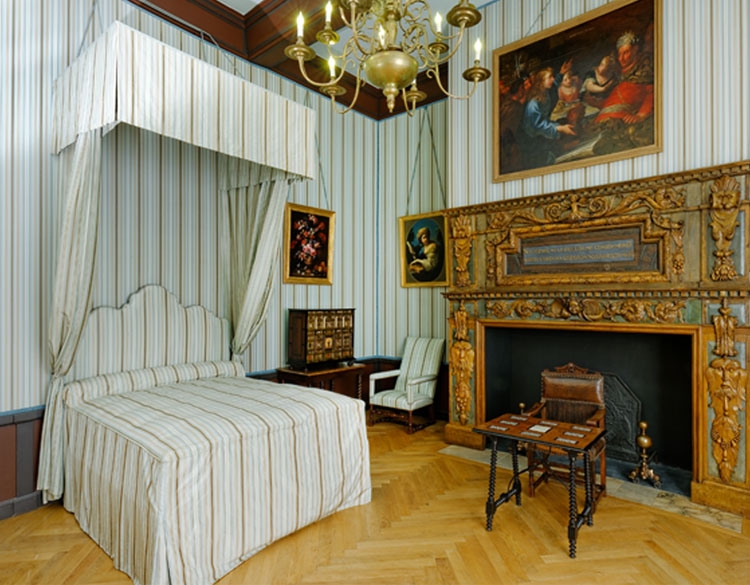
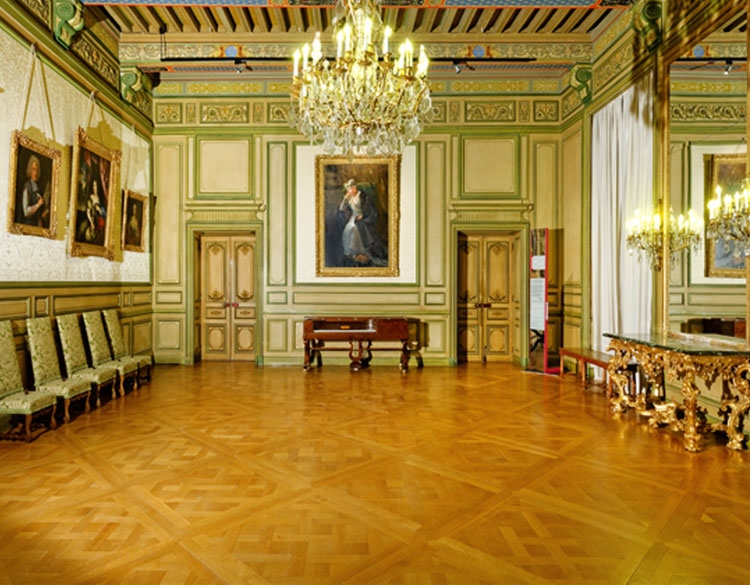
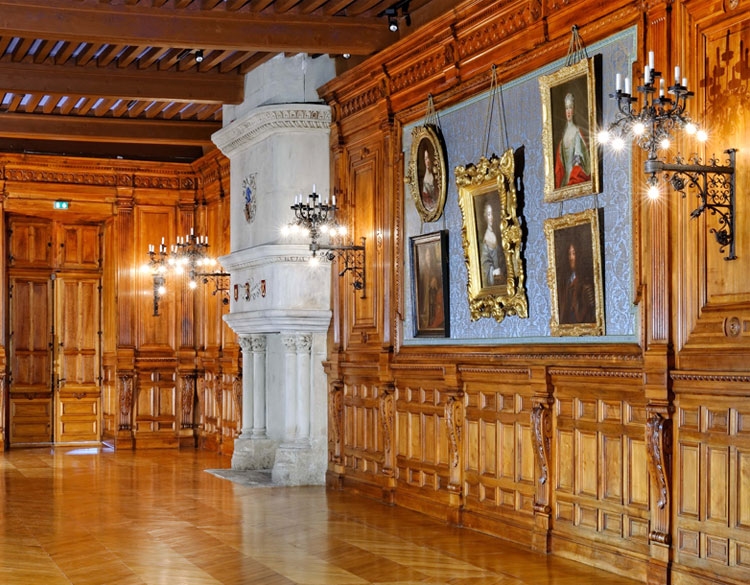
They enable to understand better the rich history of the château through models, tactile screens and art pieces.
Three models and a selection of emblematic works of art illustrate the successive stages of the building of the château, from the medieval fortress to the reconstituted château. Drawings, engravings, paintings or marquetry all reveal new points of view, original forms and perspectives, and inform us about the different states of construction or destruction of the château throughout the epochs.
The Marchioness of Sévigné's place at the château of Grignan and the part she played in its history are presented with digital tools (tactile screens), selected art pieces (paintings, engravings) and items of archives (the Marchioness' works, original letter). You will discover the legend which took shape around that intellectual woman of the "Great Century", and the important part she played in the conservation of the château of Grignan.
Owner of the château of Grignan from 1912 to 1937, Marie Fontaine played a very important part in the history and conservation of the site by rebuilding the edifice partially destroyed during the Revolution, in the spirit of an elegant residence and with a concern for its historicity.
The restoration of her private apartment, her bedroom and her drawing room sheds light on her personality, her stylistic tastes and those of high society at the time. In her former bathroom, that daring woman's biography and approach are related through archives, photographs and objects.
